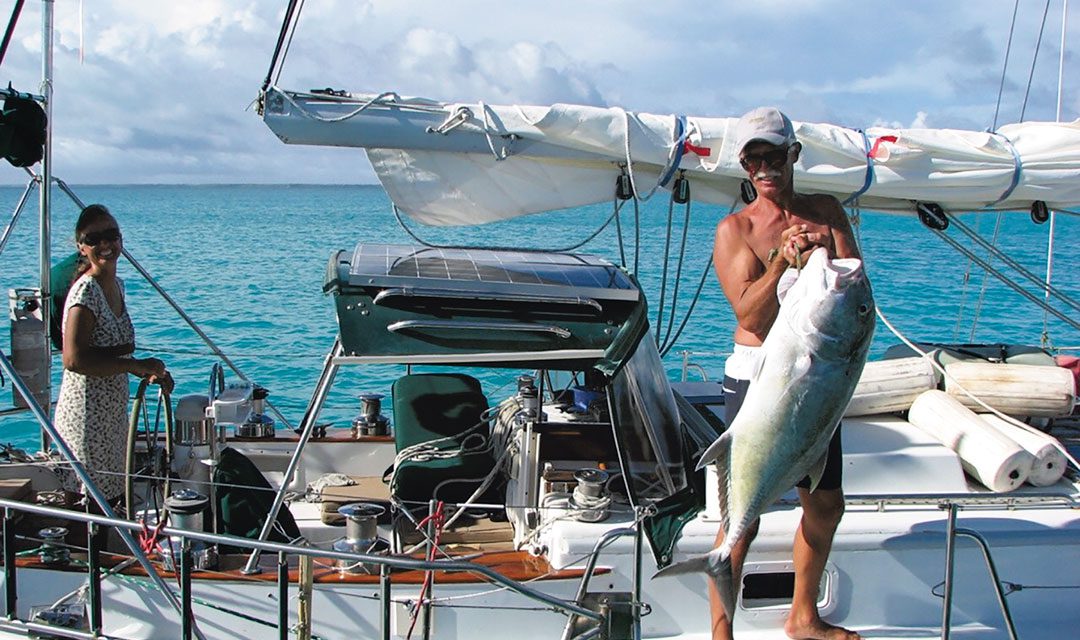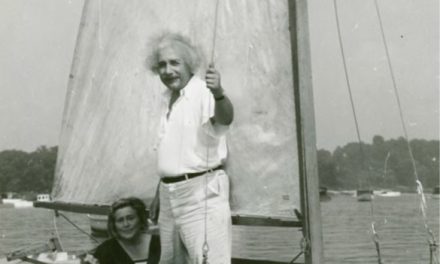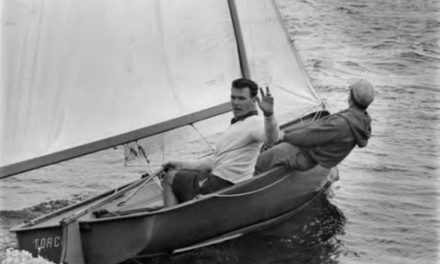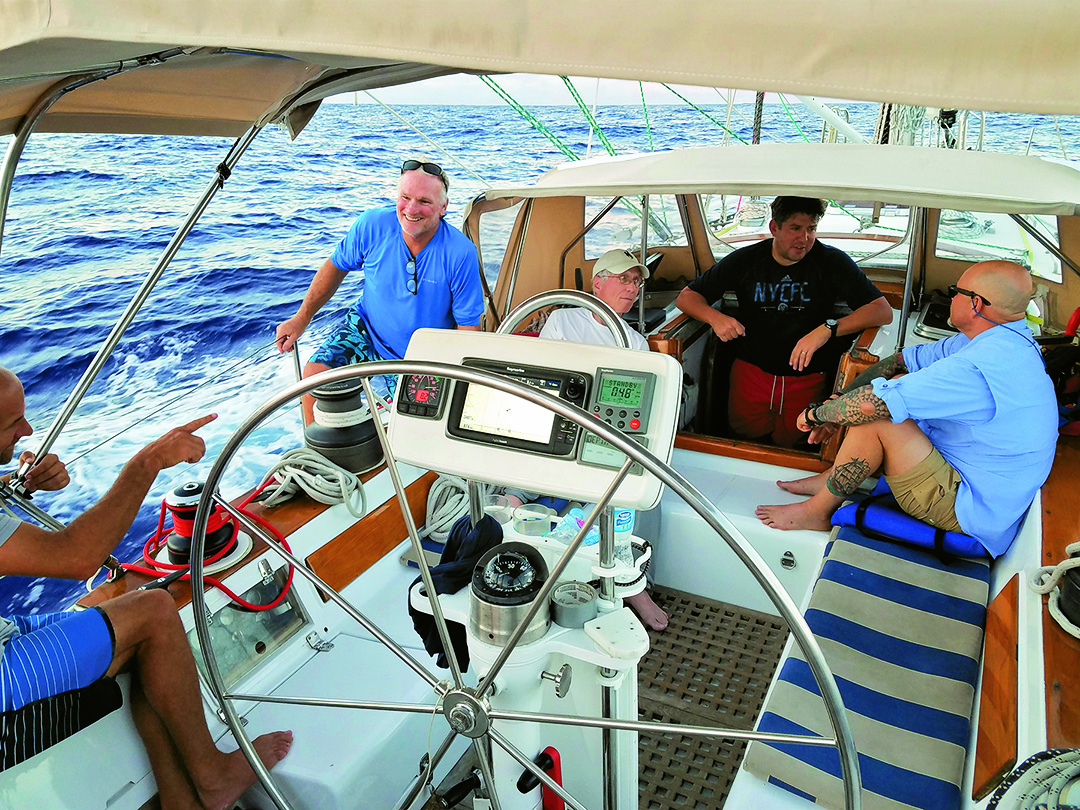Issue 134: Sept/Oct 2020

After nearly three weeks on a ventilator in a Cape Town, South Africa, hospital, stricken with COVID-19, world voyager Patrick Childress sailed over the horizon for the last time on June 8, 2020. He was several years into his second circumnavigation, this time with Rebecca, his wife of nearly 13 years, when they both contracted the dread disease. She recovered. He didn’t.
An uncommon adventurer and consummate seaman, Patrick was 69 years old.
I first met Patrick in the mid-80s when he came to Newport, Rhode Island, where I worked on the editorial team of Cruising World magazine. Not long before, on Nov. 18, 1984, he’d departed St. Thomas, USVI, on what was to have been his second circumnavigation, aboard a 12-foot 9-inch sailboat named Slippery Turtle, designed for him by Steve Callahan (author of the epic survival tale Adrift). Inspired by a news piece by television anchor Walter Cronkite on Robert Manry and his tiny Tinkerbelle, Patrick’s aim was to circle the globe on the smallest boat ever.
“It was evident immediately that he was experienced, meticulous, and practical, and we settled on approaching this as if creating a survival craft capable of making ocean voyages, and at much better average speed than prior microvoyagers,” Steve said.
Of the design and construction at Gulf Coast Yacht Consultants in St. Croix, Patrick described the goal to “create a real sailing boat rather than an overweight light bulb,” which he felt characterized too many microvoyagers that were overburdened by stores. His solution: to make water and find food along the way by means of solar stills, fishing, and—get this—collecting plankton. After successfully transiting the Gulf of Mexico and the Panama Canal, he was well into the Pacific Ocean when he was shipwrecked on an island in the Galapagos archipelago. But the dream didn’t die on that tropical reef.
Patrick was born in 1951, growing up in Miami, Florida. Boats were prominent early in his life. He told me that in his teens, he and friends had an outboard-powered open boat for fishing and exploring. His parents would ask where he’d been all day and he’d say simply, “The islands.” They assumed he meant Key Biscayne or another nearby bar of sand.
“Actually,” he said with a big grin, “we were crossing the Gulf Stream to the Bahamas.”
By the late 1970s, he’d completed a military tour in Vietnam, earned a U.S. Coast Guard Master Mariner’s license, saved enough money to buy a Catalina 27, and spent $15,500 upgrading it for offshore sailing. Later, in discussing that project, he was quick to acknowledge that the boat was not intended for offshore, but that with intelligent reinforcements Juggernaut was up to the task. He left Miami on Jan. 3, 1979, and completed his circumnavigation in St. Thomas on Jan. 2, 1982. He wryly told Cruising World’s Passage Notes: “I think it speaks well for the builder of Juggernaut that I was able to circumnavigate on a nine-year-old weekender and return with her in as good a condition as when she left port.”
While living in Rhode Island, he started a construction company. Patrick was seemingly capable of making or fixing just about anything—essential skills for shorthanded world cruising, if not home remodels.
Later, skippering a delivery for Offshore Passage Opportunities, he met Rebecca, who’d emerged from a divorce with a Valiant 40 on which she was eager to set sail for distant shores. All she needed was some experience and a like-minded partner, fortuitously finding both in Patrick.
Patrick shared his experiences and knowledge with others in many forms: how-to articles in Cruising World, SAIL, and Bluewater Sailing, co-authoring the Cruising Guide to Narragansett Bay and the South Coast of Massachusetts, and most recently in a YouTube series. He was always happy to help others, welcoming them into the cruising community.
At sea, Patrick liked to trail a fishing line. During one passage aboard a Hinckley 50 from Virgin Gorda to Northeast Harbor, Maine, we landed two big beautiful mahi mahi. We ate one and saved the other for dockhands while bunkering fuel in Bermuda. Back at sea that afternoon we had a spectacular showing of the green flash. A day later, conditions grew rough and Patrick decided to turn off the autopilot and hand steer as we sped through the breaking seas. Zipped to the chin in foul weather gear, grinning like this was the best fun he’d had all week, he yelled, “Spurr! Let’s make a list of songs to play sailing in 30 knots! I nominate Free Bird!”
Daniel Spurr is Good Old Boat’s boat review editor.
Thank you to Sailrite Enterprises, Inc., for providing free access to back issues of Good Old Boat through intellectual property rights. Sailrite.com





